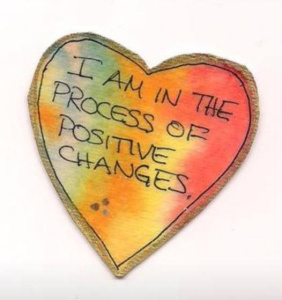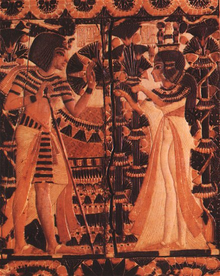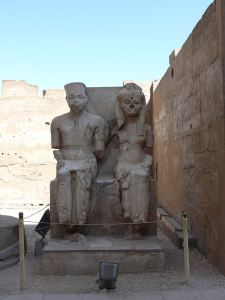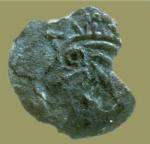Terri Herman-Poncé's Blog: Terri Herman-Ponce, page 9
August 30, 2015
DON’T Is A Four-Letter Word
Life can be full of don’ts.
Don’t treat the client like that, or I will have to write you up.
Don’t talk back to me again, or I will ground you for a whole week.
Don’t eat that crap. It’ll make you sick.
Don’t leave a messy kitchen. I work hard, too, and I’m tired of cleaning up after you.
Often, a “don’t” precedes an order, a warning, or even a threat. And it almost always comes with a negative connotation. And t hat’s why I consider “don’t” a four letter word. It’s an ugly one, but it’s also one that can easily be changed into a positive statement.

copyright Yew Wei Tan
Flickr
Don’t get me wrong–yeah, that one was intentional. :) There are times a don’t is in order. But many times a more positive statement will have far more impact, and with much more pleasing results.
How often have you been on the receiving end of a don’t statement? It puts you on the defensive, doesn’t it? It makes you react. You ball your fists, or tense your shoulders, or clench your stomach. And as soon as the don’t statement comes at you, you’re already thinking of how to fight back. And then an argument follows. And after that? Often, the offending behavior that you’ve been accused of doesn’t disappear, or it worsens just for spite.
Not a good situation, is it?
Now switch roles, and imagine what the other person feels like when you throw out a don’t. Trust me. It won’t be much different than your own reaction.

copyright Martha-Ann48
Flickr
So how do you turn a don’t into a do? It’s easy, really. When someone does something that you find offensive or just plain wrong, take a deep breath and a few moments to listen to the mind chatter inside your head. Odds are you’re already forming your fighting words without realizing it, most of which will start with the don’t. But if you take that breath, that moment, that time to not react, you can turn the don’t into the do. Using my the examples above, here’s how the new statement would look:
When you treat the client like that, it can make them feel as if they’re not important. How about next time you first ask them what the issue is, and then figure out a solution together? What do you think?
When you talk to me like that, it seems like you’re not listening to me. And this message I’m trying to give you is very important. Can we sit for a bit and calm down, and try this conversation again?
I noticed that when you eat that cereal, you usually feel sick afterward. Have you noticed that, too?
I know we both had a busy day, so how about we clean up the kitchen together and get this mess out of the way faster? That way, we can have the whole evening ahead of us to just sit back and relax.
See what happened? The don’t became a positive suggestion within a series of questions, and turned the ultimate power over to the “offender” to make the ultimate decision. Instead of putting them into a reactive situation with a don’t, they’re now in the driver’s seat and given the personal power to hear your statement and probably have a dialogue over it. And it’s in that dialogue that positive change happens.
Go ahead. Try it. Take one instance today where you’re about to throw out a don’t, take a few seconds to reconsider your reaction, then give the “offender” a positive statement that puts them in a position to effect change, maybe even with you. And see what happens.
My guess is that you’ll be very pleasantly surprised.
___________________________________________________
Copyright © 2012-2015 · All Rights Reserved · TerriPonce.com
Filed under: Stories Behind The Stories Tagged: empowerment, positive statement, positive thinking, positivity, psychology, self help








August 23, 2015
Secrets of Ancient Egypt: The Mystery of Ankhesenamun
Ancient Egypt is filled with mystery and intrigue. Though the ancient Egyptians were a peaceful people, they were not immune to brutal wars with their enemies, political intrigue, familial betrayal and conspiracies, and even murder.
King Tutankhamun, one of the most famous Pharaohs known to modern man (thanks to Howard Carter), is often viewed as an embodiment of who the ancient Egyptians and royals were. Of course, you could argue that our knowledge of the ancient Egyptians is limited because we’ve unearthed only so much, but when you ask someone about those people and that time, Tutankhamun’s name is usually among the first uttered. And like much of ancient Egypt, there are many mysteries we will never solve. Tutankhamen’s life is among them.
But his half-sister, Ankhesenamun, is an even bigger mystery.

Tutankhamun receives flowers from Ankhesenamun as a sign of love.
copyright Wikipedia
As a primer, marriage between brothers and sisters was very common among ancient Egyptian royalty, and because pharaohs believed they were descended from gods, incest was viewed as acceptable to preserve bloodlines and ensure a smooth succession to the throne. If a pharaoh and sister produced a male heir, the legitimacy of that heir as next in line to the throne would never be questioned.
Despite royal pedigree, it seems the lives of Tutankhamun (Living Image of Amun) and Ankhesenamun (Her Life is of Amun) were doomed to tragedy from birth. Tutankhamun suffered from a cleft palate, a mild case of scoliosis, a club foot, and multiple attacks of malaria. And it is believed that Ankhesenamun was first married to her own father and birthed a child at the age of twelve. Their lives were well-documented on reliefs and paintings of their parents, Pharaoh Akhenaten and Great Royal Wife Nefertiti, who were considered the Heretic King and Queen because they abandoned traditional Egyptian polytheism in favor of a monotheistic religion that centered only around Aten. For the Ancient Egyptians and priests of Amun, this was blasphemy.
But, as we all know, sometimes truth is dicier than fiction.
Ankhesenamun was born during this unprecedented religious revolution, and was raised right in the middle of the very fierce resistance Amun priesthood pitted against Akhenaten and Nefertiti. It was a time of internal turmoil and strife, during which Akhenaten focused primarily on building for Aten rather than keeping watch on Egypt’s enemies. From there, the stage for intrigue was set.
Fast forward to Akhenaten’s death, and a new pharaoh emerged. At the ripe age of nine (give or take), Tutankhamun took the throne and married his thirteen-year old half-sister Ankhesenamun. During their reign and under the guidance of two very powerful advisors, General Horemheb and Vizier Ay, Aten worship was put to an end and the god Amun was restored to his original supremacy. But Egypt had grown economically weak during Akhenaten’s reign, and diplomatic relations were in turmoil because of neglect. Which meant Tutankhamun had his work cut out for him, and Ankhesenamun was beholden to produce an heir for him to ensure nothing else could undermine their family’s lineage and seat on the throne.
If only it were that simple.
With Horemheb and Ay at his side, Tutankhamun worked hard to restore relations with the Mitanni, but despite his best efforts Egypt continued to battle with the Nubians and Asiatics. And though Ankhesenamun twice became pregnant with girls, each pregnancy ended in stillbirth.

Statue of Tutankhamun and Ankhesenamun at Luxor, hacked at during the damnatio memoriae campaign against the Amarna line of Thutmoside pharaohs.
copyright Wikipedia
When Tutankhamun died at 19, most likely the result of a leg fracture that became infected, his burial and entombment were rushed. No one knows why. Scans made in recent years showed that all but one of his broken bones had occurred after his death. Records also show that the body had been burnt inside the coffin, the result of embalming oils combining with oxygen and linen to cause an unexpected chemical reaction.
The mystery of his rushed entombment makes for a fascinating mystery, but what happened to Ankhesenamun afterward leads to even more intrigue.
With her husband and two daughters dead, Ankhesenamun knew that their lineage had come to an end. Knowing she would have to continue in her official capacity as queen, she had to find a successor. So she wrote to the Hittite king, asking to marry one of his sons. Though the letters don’t say why Tutankhamun died, the fact that she reached out to a foreigner–and remember, Egyptians believed foreigners were inferior–is particularly telling. So are her words in what she wrote to the king:
“My husband has died and I have no son. They say about you that you have many sons. You might give me one of your sons to become my husband. I would not wish to take one of my subjects as a husband…I am afraid.”

Ay performing the opening of the mouth ceremony for Tutankhamun, scene from Tutankhamun’s tomb.
Copyright Wikipedia
The Hittite king, naturally, was leery of the request and sent an envoy to investigate. Eventually, deciding he may have missed an opportunity, the king did send one of his sons to Ankhesenamun for marriage.
But that son never made it to Egypt. And his body was not found.
Under increasing pressure from Vizier Ay to marry him and legitimize his claim to the throne, Ankhesenamun married Ay as a young widow. But beneath their union lurked an unanswered question: did Ay have a hand in Tutankhamun’s death?
An inscribed ring and gold foil fragments found in the Valley of the Kings show Ankhesenamun together with Ay, but it’s still unclear what actually happened between the two. Her name never appeared Ay’s tomb, and it is believed she may have died during or shortly after Ay’s reign.
And that’s where Ankhesenamun disappears from history. No one knows where she is buried, and no known funerary objects with her name seem to exist. It is as if her life, both as it was lived and should have been written, were removed forever. Did Ay have a hand in this as well?
Perhaps, like Tutankhamun, Ankhesenamun’s tomb is still waiting to be found in a thrilling discovery that will provide the truth. Until then, the mystery of Ankhesenamun remains.
___________________________________________________
Copyright © 2012-2015 · All Rights Reserved · TerriPonce.com
Filed under: Stories Behind The Stories Tagged: ancient Egypt, ancient Egyptians, Ancient Mysteries, Ankhesenamun, archaeology, artifacts, Great Pyramid, Tutankhamun, Vizier Ay








August 19, 2015
5 Tips for Success as a Self-Published Author — great insights
I came across a blog today that talks about tips for success as a self-published author.
It was a great refresher for me. Even though nothing on the list is new, it does offer a good reminder of what self-published authors need to do to at least have a fighting chance of making it.
There are too many ebooks out there, making for intense competition, and that makes it even harder to be discovered. But these tips provide perspective on how to keep it real and how, with hard work and luck, you could find your own self-published success. (and remember, success is different for everyone!)
TIP #1: Study the Bestsellers – In both craft and business, studying successful people will help you discern the ingredients of success. Always be striving to take your craft up a level – by craft I mean storytelling, not just the way you string words together.
Click here to read the entire post.
___________________________________________________
Copyright © 2012-2015 · All Rights Reserved · TerriPonce.com
Filed under: Stories Behind The Stories Tagged: bestsellers, self publishing, self-published authors, Writers Helping Writers, writing, writing advice








August 16, 2015
OOParts – Curiosities That Can’t Be Ignored?
My writing, especially in paranormal and alternate history, takes me to some very interesting places. Lately, I’ve been spending a good amount of time studying up on OOParts (Out Of Place Artifacts), which is a term applied to prehistoric objects found throughout the world that defy their level of technology, and are at odds with their age based on physical, geological, or chemical evidence.
“They are often frustrating to conventional scientists and a delight to adventurous investigators and individuals interested in alternative scientific theories.”
There are many within scientific mainstream who dismiss OOParts in general, claiming their history can be explained, their creation is not out of place to the historical period in which they’re aligned, and that the people who built or constructed them were entirely capable of doing so. In short, it’s Occam’s Razor at work: the simplest answer or explanation is often the correct one.
And yet there are others who challenge these explanations, claiming there is more to Earth and our history than we want to admit. Because, according to them, to admit the truth means we have to admit that we are wrong in some of our historical interpretations and that there is, or was, something else at work as humans progressed into the advanced civilization we know today.
In other words, how could ancient man, with simple tools and a supposedly less-educated mind, create or build some of the amazing artifacts and historical sites we’ve discovered? Whatever your thoughts on the matter, I’m intrigued by all possibilities and that’s what prompts me to write the paranormal, alternate history fiction I have a passion for.
Here are some OOParts that might make you go hmm:

copyright: Wikipedia
Acámbaro Figures. In 1944, a guy named Waldemar Julsrud found a clay figure near the banks of Cerro del Toro in Acámbaro, Guanjato, Mexico. When he started discovering more of them, he hired a team who went on to uncover 32,000 figurines depicting dinosaurs, unknown animals, an extinct species of rhinoceros, a horse that hasn’t been around since the Ice Age, and other unidentified species no one has seen before. Others show human figures hunting. Carbon dating placed the artifacts at 5,000 years old, that are similar to stones found in Peru. Some argue that some pieces are incomplete and that they haven’t been able to replicate carbon-dating results. But if they are a fraud, why carve 32,000 pieces? That’s a heck of a lot of work for the hype.

copyright: Wikipedia
Göbekli Tepe. This is an archaeological site in Turkey that dates to the 10th millennium BCE, which clocks in at 14,000-15,000 years ago when hunter-gatherers roamed the land. The area is made up of ring-shaped pits and monoliths that stand at 16 feet tall, and was most likely a temple. But here’s the thing: each of the pillars weighs from seven to ten tons each, and those hunter-gatherers hadn’t figured out how to make pottery or tools made of metal yet. So how did they get them into place, and so perfectly?

Credit: http://www.mnh.si.edu
The Goddard Coin. A Norse coin found in a Native American Settlement, stamped between 1065 and 1080 during the reign of King Olaf III. How did an ancient Norse artifact end up on Native American soil during that time period? And why was it the only one? Did the Vikings really travel further south than we believed they did? And, if so, why is it the only Norse artifact found there? Was it planted? Or is there another story at work we don’t know about, and maybe never will?

copyright UNESCO
Nazca Lines. A series of ancient geoglyphs in the Nazca Desert, Peru. Created between 500BC and 500AD, they depict figures of monkeys, fish, birds, spiders, trees, flowers, and many other shapes. The largest measures in at 660 feet. At first, it was believed these Lines could only be seen from flying overhead, but others claim that they can be viewed from adjacent hills. And even if that’s the case, why were they designed in the first place?
There is no arguing that there are anomalies or mysteries at work here, much as there are in interpreting how the Ancient Egyptians built the pyramids with such mathematical or astronomical precision, or how Stonehenge was constructed, along with so many other artifacts and sites that intrigue the imagination. But if there’s one lesson I’ve learned in my continuing research, it’s that man wasn’t as uneducated as we sometimes like to think they were. I truly believe they had skills and smarts we still are only learning about. But unless someone can go back in time, or someone can come forward in time, we’ll never have all the answers.
Until then, I’ll continue to create my own theories and explanations in my own stories. :)
___________________________________________________
Copyright © 2012-2015 · All Rights Reserved · TerriPonce.com
Filed under: Stories Behind The Stories Tagged: Acambaro Figures, archaeology, artifacts, book research, Gobekli Tepe, Goddard Coin, Great Pyramid, Nazca Lines, OOParts, stonehenge, writing research








August 9, 2015
Recognizing You Have Control Only Over Yourself Is A Powerful Place to Be
I’ve been paying attention to people a bit more lately. And they’re all going through stuff. Big or little, their “stuff” is causing stress and most of these folks are struggling in how to deal with it.
Work. Family. Spouses. Children. Bills. You name it, and people are trying to cope. I’ve also noticed that many of them are also trying to either change the situation they’re in or the person (or people) they’re dealing with.
How many times have you caught yourself saying, “Things will be different when…”
My bills are paid off
Things settle down at work
My child grows up and I get me-time back
My husband starts pitching in more around the house
My wife stops nagging me
This latest project is finished
I make the next deadline…
There are limitless excuses we make in the hopes that something will change. But these are immediate and reactionary responses that don’t get us anywhere. They also take away our sense of empowerment, our own control, and hand it right over to the person or situation dealing with.
That’s the irony behind all of this. I do it myself, and none of us are immune. It’s very easy to pick on something external to us and find a convincing argument that stress will ease when that external something-or-other changes.
But imagine if you didn’t hand over control and kept it for yourself instead.
Think about a situation you’re dealing with now in which it feels like you’re not in control. Now think of all the excuses made to complain about it, such as: “I can’t believe he did that. Why would he do that to me?”…”Did you see how they handled that deadline at work? Now we all have to work longer because of it.”…”If they hired someone with more experience, we wouldn’t be in this situation.”…”Why can’t my husband help out with the laundry? Is it too much to ask?”…”She won’t leave me alone. If she just got off my back, life would be a lot easier around here.”
How does it make you feel when you fall prey to those thoughts? Helpless? Frustrated? Angry? Out of control?
Now think about that same situation and imagine changing your reaction, your perception, of what’s going on. Next time you fall into that mind-trap, take charge of your reaction, take charge of you, and instead think: “I choose to not get angry with his oversight. He’s trying his best just like I am.”…”He’s not an idiot. He’s just overwhelmed with his new job and I’ve been there myself.”…”He may not have helped with laundry, but he cooked dinner the other day. I’ll thank him for it.”…”I’ll respond to her question rather than blow it off. She’s nagging only because I’m ignoring her.”
It’s a small and simple shift, really, but one with a big benefit: it gives us peace of mind and a bigger sense of control. It changes helplessness into self-reliance; frustration into fulfillment; anger into inner peace.
“I have learned that I really do have discipline, self-control, and patience. But they were given to me as a seed, and it’s up to me to choose to develop them.” (Joyce Meyer)
In the end the only thing you have control over is you. So the next time you want to react and hand over control of a situation, take a deep breath and rethink what you can do to take charge of you. Don’t give all the power to the person who’s annoying you, or the tough situation you’re facing. Give it to you. Walk away from the person or issue if you need. Take five minutes, or two hours, or a whole day. But find the time to find you. Then, turn it around with patience and grace and take charge of what you truly control.
Yourself.
It’ll have a profound impact on your life.
___________________________________________________
Copyright © 2012-2015 · All Rights Reserved · TerriPonce.com
Filed under: Stories Behind The Stories Tagged: empowerment, happiness, psychology, Self Awareness, self control, self help








July 26, 2015
What Happened to 9-to-5?
Are you guilty of doing any of these?
Setting off for vacation only to take your work phone, laptop, or both with you in your suitcase. And then setting them out in your hotel room. And then using them.
Checking work email within the first hour of waking up. Or, worse, as soon as the alarm clock goes off.
Checking work email during dinner. Or, worse, just before you go to bed.
Working over the weekend. Even if it’s “only for a little bit.”
Discovering that, despite all your additional efforts, your extra work had little impact because the deadline you were working on wasn’t a true deadline.
With technology making access to work so easy, it’s just as easy to keep working. And nowadays, it seems that many people wear their longer hours like a badge of honor. How about this familiar conversation. It’s Monday morning and you’re stepping into the elevator and you run into a colleague:
“How was your weekend? Beautiful weather, wasn’t it?”
“Definitely, but I worked for half of it.” The colleague gives a shrug, like it was no big deal. “How about you? Did you do anything fun?”
“Went to the beach, but got sucked into some work emails and missed out on volleyball and swimming. Now that I think about it, the email probably could have waited until today.”
“Maybe next weekend will be better, then.”
“Yeah. Maybe next weekend will be better.”
But as we all know, next weekend usually never turns out the way we planned. See, working with flexibility (in a work-life balance mindset) is one thing. But when the job takes over your life that has nothing to do with a major, time-sensitive project with a hard deadline? That’s something else entirely. We now live in a culture devoted to thinking that keeping busy equals something of importance. That unless we’re working past the traditional 9-to-5 on a regular basis, we’re not really working.
Okay, so let’s take a step back and admit that, today, the traditional 9-to-5 concept is long gone. But in its truest sense, that’s because more companies now recognize that employees are happiest when they can adjust their workday to accommodate real life. So 9-to-5 may in actuality be something more like 8-to-10, then 1-to-4, finished by 7-10. Or even 7-to-7 three days a week. Or something else entirely.
The point is, flexibility isn’t the same thing as busyness. Busyness, or giving the appearance that being busy and putting in longer hours and days that’s not project- and time-specific, is very different. And it comes with a price.
Today more workers are stressed, tired, and suffering the physical effects of not balancing life with what true work is. They’re unhappy, trying to find comfort and peace outside of themselves, and still falling back on the bad pattern of busyness. It’s a product of a culture in love with the idea that technology is good and that doing more–all at the same time–is even better.
Umm, no it isn’t.
So let’s think about this a bit more.
When we’re overly busy, our minds and bodies are overloaded. There’s too much going on for the brain to process. Yes the brain is a computer, but it’s a physical organ that needs care and feeding and rest. If you’re constantly taxing that brain, that central computer that regulates the body, something eventually is going to give. And often it’s on several levels: physical, mental, emotional, and spiritual.
So how do we deal with this overworked attitude? How do we make our lives more productive and healthy without giving in to the concept of busyness?
Focus on one task at a time. You’ll get much more done, and with much greater quality, when you accept that there is no such thing as multi-tasking. And when you’re done with that one thing, then you can move onto the next.
Accept that busyness is all in your head and that it’s not necessary. In truth, no one is going to give you extra points for working yourself to death. An overloaded brain can’t perform at its optimum level no matter how much you try to convince yourself that it will.
Give yourself a break. Allowing the brain and the body the time to rest is A Good Thing. It lets your cells recharge and renew the way Mother Nature intended. In fact, Mother Nature made us the way we are for a reason. It’s when man intervenes, in this case through busyness, that things get mucked up.
Accept that doing nothing is not wasting your time. Even Paleolithic Man had periods where he did nothing. He may have worked his ass off, trying to capture and kill his next meal, but he also knew that sitting under a tree and taking the time to refresh and renew would give him the focus he needed for his next hunt.
The brain needs time to wander. So let it. That’s where creativity and fresh thinking come from. It’s also the easiest thing to do. The next time you find your mind wandering, see where it leads you. You may be in for a terrific surprise.
Remember: the only reason you’re uncomfortable with downtime is because technology gives us more and more tools to keep us busy. Used properly, those tools can become our best allies. As long as you don’t let them run your life or ruin your weekends and vacations.
___________________________________________________
Copyright © 2012-2015 · All Rights Reserved · TerriPonce.com
Filed under: Stories Behind The Stories Tagged: brain, busyness, multi-tasking, technology, work, work stress, work-life balance








July 15, 2015
Writers, are you going to ring the bell?
Today, we’re used to getting things the easy way. Well, some things anyway. Want the latest news? Check your smart phone. Want a quick meal? Throw something in the microwave.
Want to earn a living at writing?
Ummm…that’s going to come with work.
Today on Bob Mayer’s blog, Bob talks about what it really means to write and what it really means to give up, or “ring the bell”. Because this is hard work. If you’re looking for an easy way to get there, or ways to game the system, then you might want to think again because:
When you game the system and the game changes, then you’re, how shall we say: fraked? It’s not a game! It’s writing. It’s about pouring blood on the page.
Click here to read the blog in full.
___________________________________________________
Copyright © 2012-2015 · All Rights Reserved · TerriPonce.com
Filed under: Stories Behind The Stories Tagged: Bob Mayer, publishing, ring the bell, success, writing, writing advice








July 12, 2015
Un-Bucket Your Bucket List
Vacationing in Italy.
Viewing the cosmos from the southern hemisphere.
Visiting the Great Pyramid.
Completing a marathon.
Hiking down the Grand Canyon.
Fill In The Blank…
Bucket lists are pretty common. Lots of people I know have them and use them as things to look forward to. Things to work for. Things to plan for, to check off, to consider a life’s achievement when done.
But just how good are bucket lists for us? It’s great to have goals, but when we spend our time focusing on the future and planning for something down the road (and that we may not ever accomplish), we miss a lot of the now. Bucket lists also become another type of to-do list, and can make you feel as if you’re missing out if you don’t check it off your list. And don’t we have enough to do in our lives already? Don’t many of us already concentrate too hard on the things we need to do next, along with the deadlines that come with them?
In case you haven’t noticed, bucket lists have deadlines, too. Which adds even more pressure to the “to do” list we have inside our heads.
Yes, it’s true we only live once. But, in my mind, that’s an excuse to find happiness in things or places or situations that are outside of the here and now. And that are external to us.
So what if you let go of your bucket list and simply focused on what you’ve got right now? What if you gave up on the idea of a vacation that’s in some faraway place, and instead spent your time being mindful of where you are at this very moment? The beauty that nature has to offer right in your own backyard or the nearest park or beach? The liveliness we share with the people around us, and those we love and embrace as part of the richness of our lives? The silence and peace that comes with letting go, of not thinking about a checklist for our life to feel complete?
Think about it. Instead of focusing on your next “real vacation” or your next “exciting activity” or your next “real moment” that takes you out of your everyday life, focus on pursuing what’s meaningful to you.
And if you don’t know what’s meaningful to you, then isn’t that what you should pursue instead of a bucket list anyway?
___________________________________________________
Copyright © 2012-2015 · All Rights Reserved · TerriPonce.com
Filed under: Stories Behind The Stories Tagged: bucket list, mindfulness, psychology, self help, southern hemisphere, Vacationing in Italy








July 7, 2015
Kindle Unlimited: The New Good and The New Bad
For you writers out there…
By now you’re probably well aware that Amazon changed its Kindle Unlimited terms again. Some don’t like the change, but I gotta admit I’m okay with it. JA Konrath just posted his thoughts on the new KU changes as well.
Here’s a snippet:
Under the old system, you got a full share if someone read 10% of your work. A 20 page work meant the reader had to get through 2 pages.
Anyone can get through 2 pages, even if the 2 pages are awful.
Now, we’re being paid according to how much the reader is reading. Isn’t a writer who is able to sustain a reader’s suspension of disbelief for 100,000 words more deserving of being paid more than a writer who can’t sustain a reader for 3 pages?
Want to read more of Konrath’s post? Go here.
Personally, all self-published authors have options. And that’s the beauty of choosing that end of the business. You don’t have to stick with Amazon, or you can choose to publish with Amazon only, or you can pull your books from every etailer and then not have to worry about anything. Except maybe not having your work in print. ;-)
Thoughts? Good, bad, or indifferent?___________________________________________________
Copyright © 2012-2015 · All Rights Reserved · TerriPonce.com
Filed under: Stories Behind The Stories Tagged: Amazon, JA Konrath, Kindle Unlimited, novels, self publishing, short stories, success, writing, writing advice








June 28, 2015
A Small Way to Sneak Exercise into Your Day
The body wasn’t designed to sit around all day. It was designed to move, and to keep moving.
So, as I was looking around for additional ways to sneak in exercise, I stumbled upon a really cool smart phone app to help me keep better track of how much I was moving. Or, in some cases, how little.

copyright Beverley Goodwin | flickr
A week ago I downloaded Steps Pedometer for my iPhone. It’s a simple app (at least simple on my end) that monitors how many steps you take each day. You may not be aware that 10,000 steps (or 5 miles) is considered a healthy amount of movement for the average person. Enough to burn calories, keep the blood pumping, and ensure you’re not a total couch potato.
What I like about the app is that it monitors my progress by percentage. So 100 steps is 1% of goal, 1,000 steps 10%, 5,000 steps 50%…and so on. It also incentivizes me to keep going, when I realize I’m not moving enough. A quick check of the app (which runs in the background) tells me real-time just how close or far off I am. It also cheerleads along the way, by showing me how much I walked the day before and for the week, plus calories burned! I either carry my phone in my handbag or keep it tucked in my back pocket, so the app picks up most of my activity and that makes tracking really easy.
And you should know that it monitors any kind of walking. Fast or slow, as part of your workday or errands…Steps Pedometer uses GPS to figure out when you’re mobile and when you aren’t.

copyright Rupert Ganzer | flickr
The drawback? It’s a battery suck. For some folks that could be a problem, but I’m one of those folks who always has the iPhone plugged in charging. It’s something I’ve always done, so the app’s background activities don’t bother me so much. For someone else who doesn’t do this, it could be a problem unless you’re open to learning the new habit of recharging.
If you’re looking for added incentive to build movement into your day, I definitely recommend Steps Pedometer or any other app or Fitbit-type unit. So what are you waiting for? GET UP AND MOVE!
___________________________________________________
Copyright © 2012-2015 · All Rights Reserved · TerriPonce.com
Filed under: Stories Behind The Stories Tagged: exercise, health, healthy lifestyle, Pedometer, smart phone app, Steps Pedometer, walking











